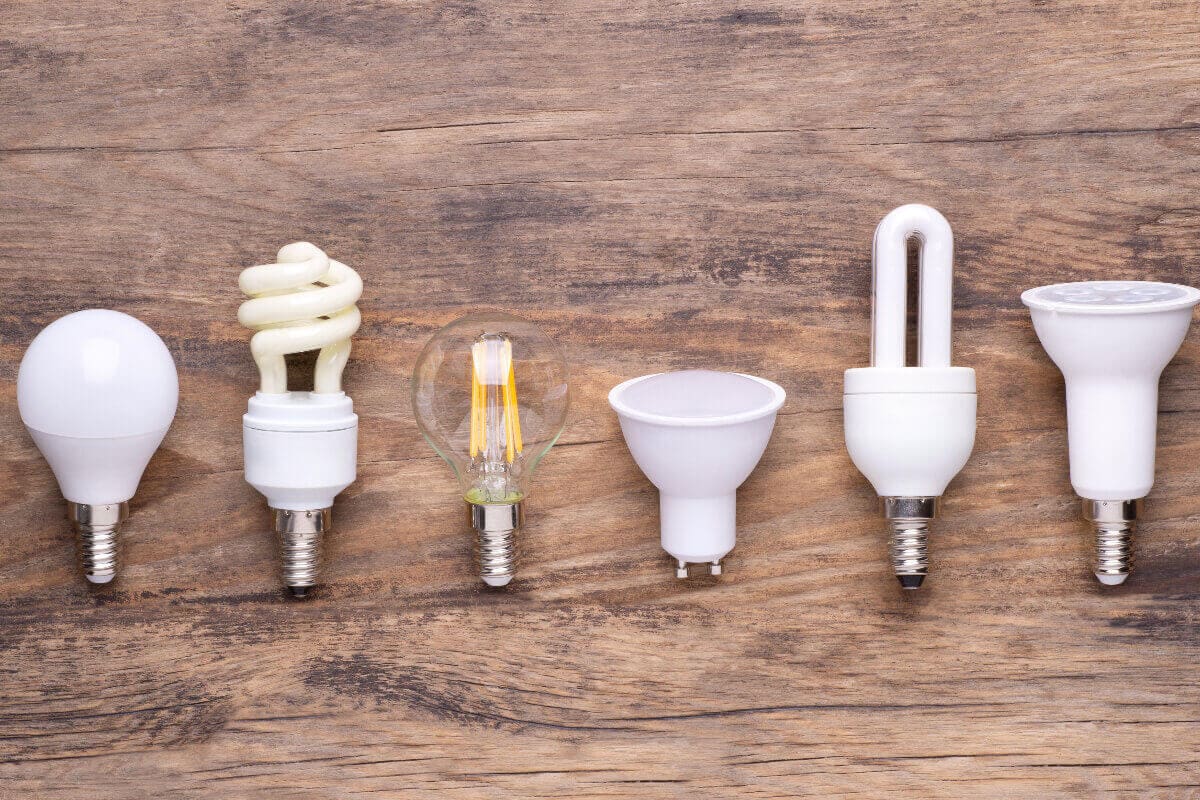As we illuminate our homes and workplaces, the humble light bulb takes center stage—yet its simplicity belies the complex technological ecosystem it represents. With many choices, from traditional incandescent bulbs to cutting-edge organic LEDs (OLEDs), today’s consumers face a bright array of options, each promising a unique balance of efficiency, color fidelity, and innovation.
Add to that the burgeoning field of smart light bulbs, which blend functionality with convenience for a personalized lighting experience, and the quest for the optimal light source becomes an exploration of both technology and preference. This essay will cast light on the myriad of light bulb technologies available, examining how the latest advancements and performance metrics satisfy diverse needs while considering the critical aspect of sustainability in our ever-more energy-conscious society.
Table of Contents
- Types of Light Bulbs
- Smart Light Bulbs
- Light Bulb Performance Metrics
- Environmental Impact and Sustainability
- Related Content
Types of Light Bulbs
Illuminating Innovations: Leading Light Bulb Technologies in Today’s Market
When discussing tech advancements, the humble light bulb doesn’t often flicker at the forefront of our minds. Yet, the evolution of this everyday necessity cannot be overstated, as it ushers in unprecedented efficiencies and functionalities in residential and commercial spaces. In the world of illumination, three technologies lead the pack: LED, Smart Bulbs, and OLED.
LED (Light Emitting Diodes) bulbs are the poster children of modern lighting solutions. They run circles around their incandescent and fluorescent predecessors regarding energy efficiency, lasting up to 25 times longer while using around 75% less energy. LEDs offer a versatile color range from warm yellows to more excellent blues, giving users control over ambiance — a prime choice for the eco-conscious consumer.
Smart Bulbs have taken connectivity to dazzling new heights. With Wi-Fi, Bluetooth, or a dedicated hub, these futuristic light sources can be controlled through smartphones, voice assistants, or smart home systems. Whether setting mood lighting, scheduling on/off times, or integrating them into security setups, Smart Bulbs provide a rich landscape of convenience and optimization.
OLED (Organic Light Emitting Diodes) represents the cutting-edge for those with a keen eye for design and energy saving. Unlike LEDs, which are point sources of light, OLEDs create a uniform, diffuse light and can even be made transparent or flexible. These thin, energy-efficient panels are ideal for creating an aesthetic as striking as practical, perfect for modern, minimalist spaces.
Innovation doesn’t slumber, nor do tech enthusiasts constantly scout for the next best thing. Whether opting for the reliability and familiarity of LED, the digital sophistication of Smart Bulbs, or the sleek finesse of OLED, today’s lighting technologies cater to a broad spectrum of preferences and purposes, embracing the intersection of functionality, sustainability, and art.
As the market continues to expand, the bright future of lighting tech promises more refined products. It shines a spotlight on the seamless integration of technology into the fabric of everyday life.
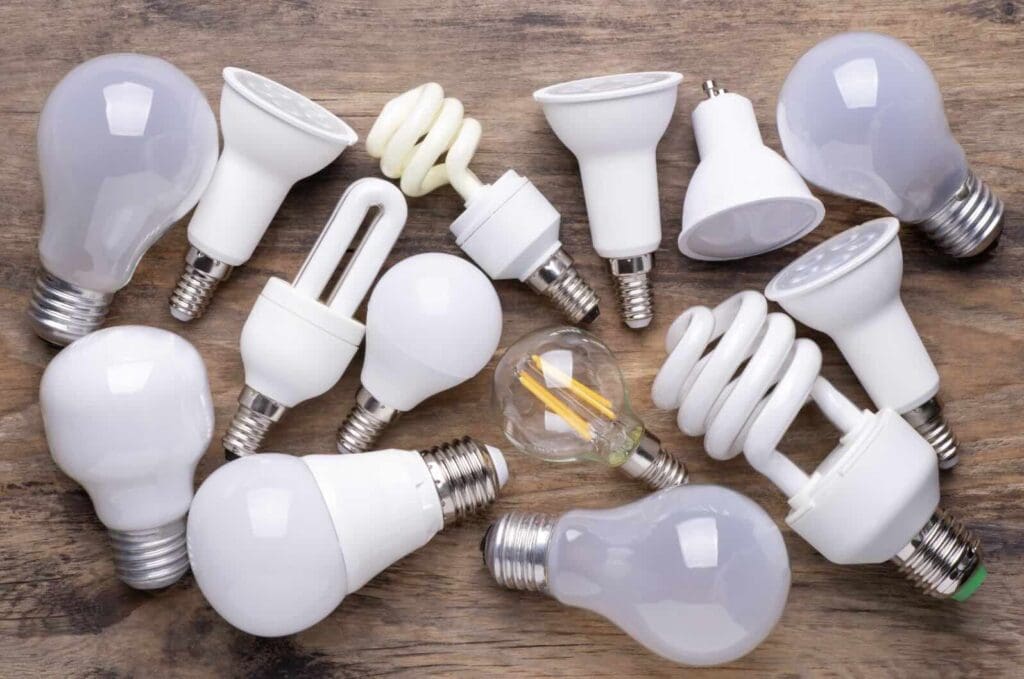
Smart Light Bulbs
Revolutionizing the Home Environment with Smart Bulb Automation
Smart bulbs aren’t just about flipping a switch; they’re the very embodiment of home automation. With the advent of these intelligent lighting solutions, controlling the ambiance of a room has never been more precise or accessible.
The real game-changer lies in synchronizing these bulbs with home automation systems. Imagine adjusting lighting based on circadian rhythms or having your entire home respond to your arrival by illuminating your path without a single touch.
Personalization Taken to New Heights
Customization is at the forefront of intelligent bulb technology. Users create lighting scenes that craft experiences and moods, from a simulated sunrise to an energetic party vibe, with nothing more than a smartphone app.
Geofencing technology takes this further by triggering lighting changes when you enter or leave a predefined area. This isn’t just about convenience but crafting environments that adapt to individual lifestyles and preferences in real-time.
Integration with Smart Home Assistants
Voice activation through smart home assistants like Amazon Alexa, Google Assistant, or Apple’s HomeKit has rendered the physical act of reaching for a light switch nearly obsolete. The breadth of voice commands accommodates not just on/off directives but also enables nuanced control over brightness and color.
The result is an interaction with technology that feels natural and intuitive and an homage to a futuristic lifestyle that is now the present.
Boosting Home Security
Security is a pivotal advantage of smart bulbs. Paired with motion sensors and surveillance systems, these bulbs dissuade potential intruders by simulating presence within a home. Sudden illumination upon detection of motion can stop a burglary attempt in its tracks. Moreover, vacation modes can replicate typical lighting patterns, so a house never appears vacant.
The Interplay with Health and Well-being
Delving deeper into circadian rhythms, smart bulbs fine-tune light temperatures to coincide with the body’s natural sleep-wake cycle, thus promoting better sleep and overall well-being.
Blue light suppression in the evening aids in melatonin production, easing users into a restful state. By day, brighter, cooler temperatures keep individuals alert and productive. Technology, once seen as a hindrance to health, is now a proactive participant in improving it.
Economical and Eco-Friendly
The economics of intelligent bulbs are hard to ignore. While the upfront cost can be higher than traditional bulbs, the longevity and energy savings these bulbs offer translate to long-term financial savings.
Moreover, their eco-friendliness is incontestable. Automation that dims or turns off lights when not needed reduces waste, aligning with broader energy conservation and sustainability goals.
Data Usage and Personal Insights
Moreover, intelligent bulbs mine a wealth of usage data that can provide insights into individual habits, potentially leading to more eco-friendly and cost-effective behavior modifications. This capability doesn’t just translate to tailored lighting experiences but can also inform users about their energy consumption, creating an opportunity for more conscious living.
Conclusion
The lighting game is no longer just about illumination; it’s an innovative dance of technology, personalization, and environmental awareness. Smart bulbs are the conductors of this dance, orchestrating a home ecosystem that’s efficient, secure, and responsive to the nuances of human behavior. Forget the toggle switches; the future is here, and it’s bright, intelligent, and undeniably brilliant.
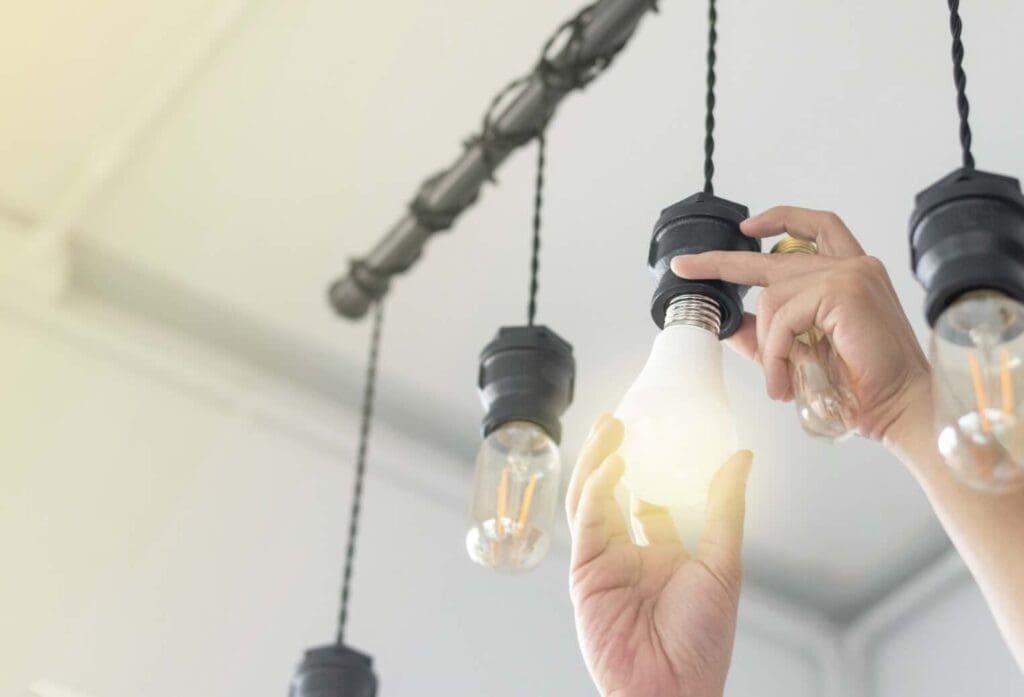
Light Bulb Performance Metrics
When delving into the nitty-gritty of light bulb performance, there are pivotal metrics one should consider beyond just the bells and whistles of connectivity and aesthetics. These metrics make a bulb worth its cost in the long run, not just a tech novelty.
Lumens measure a bulb’s brightness—the higher the lumens, the brighter the bulb. Discerning the exact brightness you need in an era of high-efficiency LED and OLED bulbs is critical. No one appreciates the overhead light equivalent of staring into the sun during a midnight snack run.
Color Rendering Index (CRI) is another metric that plays into the quality of light rendered by a bulb, manifesting how vibrant and true-to-life colors look under its light. Any CRI rating above 80 is considered acceptable, but for those who need precise color differentiation, like artists or designers, values nearer to 100 are non-negotiable.
Color temperature is not about heat; it measures a bulb’s light’s visual warmth or coolness. Measured in Kelvin (K), a lower value denotes a warmer, yellowish light, while higher values indicate a cooler, blueish light. This metric caters to creating a desired ambiance or enhancing focus and productivity.
Wattage is still a metric to consider when browsing. However, LED and OLED options are less of an issue; the power drawn affects consumption and cost. Remember, a lower wattage does not inherently mean dimmer light – it’s about efficiency.
Lifespan is the tech enthusiast’s nod to convenience and long-term planning. Who has time to replace bulbs constantly? With LEDs lasting over 50,000 hours, bulb replacement becomes infrequent, saving time for more critical tech tinkering.
Dimmability is crucial for those who demand dynamic control of their environment. Not all bulbs dim smoothly or, indeed, at all. Before choosing, confirm that the bulb can interact flawlessly with existing dimmer switches or smart home systems.
Lastly, we must consider the impact of compatibility. Bulbs must play well with existing fixtures and home automation systems. They should easily pair with apps and devices without requiring a tech degree for troubleshooting.
Selecting the right bulb is a balance of efficiency, color fidelity, longevity, and sensible integration into one’s innovative ecosystem. Lighting should complement lifestyle, enhance mood, and promote well-being without a second thought. Achieving this requires attention to these performance metrics—a true hallmark of forward-thinking adoption and seamless technological symbiosis.
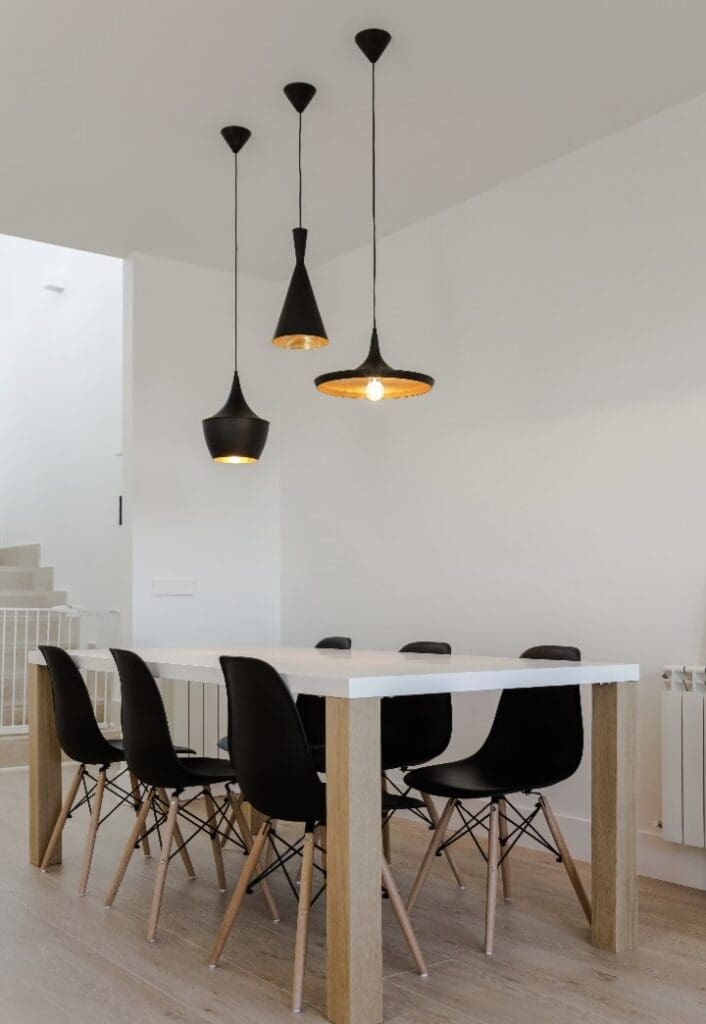
Environmental Impact and Sustainability
Evaluating Light Bulbs Through the Environmental Lens: Beyond Efficiency
When discussing the environmental sustainability of light bulbs, one must delve into production, operation, disposal, and the complete life cycle. Light bulbs go through various stages, each with environmental implications. Here’s what technology enthusiasts and eco-conscious consumers need to understand.
Raw Material Extraction and Production:
The production of light bulbs, be they LEDs, OLEDs, or Smart Bulbs, begins with raw materials. It’s imperative to consider the extraction impacts, energy used in manufacturing, and the overall carbon footprint. Advances in manufacturing technology are reducing these impacts as more companies adopt greener practices.
Operation Environmental Effects:
Operationally, beyond energy efficiency, one must scrutinize the power generation sources. Even the most energy-efficient bulbs contribute to carbon emissions if the electricity comes from fossil fuels. Hence, pair energy-efficient bulbs with renewable energy sources for a truly sustainable lighting solution.
Disposal and Recycling:
End-of-life treatments are critical. Light bulbs contain materials that can be harmful if not disposed of properly, like mercury in CFLs or electronic waste from intelligent bulbs. Promoting recycling programs and the safe disposal of light bulbs are essential to mitigate harmful environmental effects.
Lifecycle Analysis and Future Developments:
The true mark of an environmentally sustainable product is often seen in a comprehensive lifecycle analysis. Future developments aim to improve at every stage, from using less hazardous materials to creating longer-lasting products, reducing the environmental impact per hour of lighting provided.
Conclusion:
Every stage counts in the quest for sustainability, from the extraction of materials to the recycling bin. It’s not just about the bulb’s efficiency or operational carbon footprint. Monitor manufacturing advances, compatible renewable energy usage, and proper end-of-life management to make informed, responsible choices for intelligent, efficient, and genuinely green lighting.
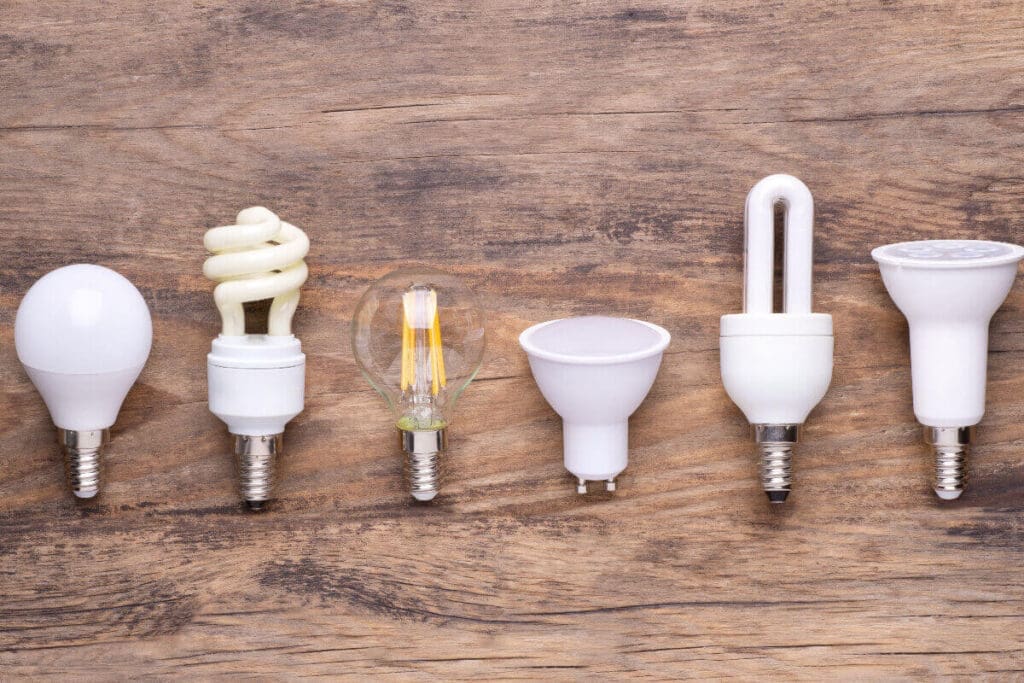
As we dim the lights on this exploration of luminous innovation, it becomes clear that choosing the correct light bulb transcends mere functionality—it is a declaration of our values and vision for the future.
With groundbreaking advancements in LED, smart bulbs, and energy-efficiency standards, consumers can make lighting choices that brighten spaces and contribute to a sustainable world.
The journey through the spectrum of light bulbs reveals a path lit with possibility, where each bulb serves our immediate needs and reflects our commitment to environmental stewardship. Embracing these illuminating technologies enables us to shine a light on a brighter, greener tomorrow.
If you want to see how Mondoro can help you with your Ul Certified lamp needs, we would love to talk to you about how we can help you.
Find out more about how Mondoro can help you create, develop, and manufacture excellent home decor and furniture products – don’t hesitate to contact me, Anita. Check out my email by clicking here or become a part of our community and join our newsletter by clicking here.
Mondoro gives out a FREE Lookbook to anyone interested. You can receive a copy of our latest Lookbook by clicking here.
Listen to our Podcast called Global Trade Gal. You can find it on all major podcast platforms. Try out listening to one of our podcasts by clicking here.
Subscribe to our Mondoro Company Limited YouTube Channel with great videos and information by clicking here.
Related Content
What Is The Difference Between LED, CFL, And Incandescent Light Bulbs?
There can be a little bit of confusion about the difference between an LED or incandescent bulb and which light bulb is the most energy-efficient one to use.
You can discover more by reading What Is The Difference Between LED, CFL, and Incandescent Light Bulbs? by clicking here.
What Are The Standard Light Bulb Base Socket Types And Sizes?
It can get quite confusing when considering different types of light bulb socket bases. Many people get confused about the different numbers used for each light bulb base and their meanings.
You can discover more by reading our blog, What are the Standard Light Bulb Base Socket Types and Sizes? by clicking here.
Meaning Of The Incandescent Wattage Sticker On Your Lamp Socket
The incandescent wattage warning sticker on your lamp socket helps inform consumers what wattage lightbulb they can safely use for their lamp. The sticker also indicates that the lamp has been tested up to the UL or ETL standard for the amount of wattage listed.
You can discover more by reading our blog Meaning Of The Incandescent Wattage Sticker On Your Lamp Socket by clicking here.

